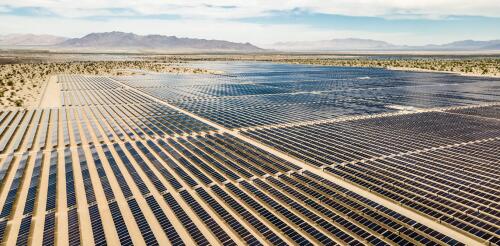Election 2024
The United States is producing more oil and natural gas today than ever before, and far more than any other country. So, what roles did the Trump-Pence and Biden-Harris administrations play in this surge? The answer might surprise you, given the way each has talked publicly about fossil fuels: former President Donald Trump embracing them, and President Joe Biden and Vice President Kamala Harris focusing on reducing fossil fuel use to fight climate change. Under each of the three most recent presidencies, Republican and Democratic alike, U.S. oil and gas production was higher at the end of the administration’s term than at the beginning. That production has both pros and cons. Together, oil and gas account for nearly three-quarters of U.S. energy consumption. Producing oil and gas in the U.S. provides energy security, and high production generally keeps prices down. Burning oil and gas, however, releases carbon dioxide into the air, contributing to climate change. And nat...
Although Vice President Kamala Harris touts clean energy and Donald Trump makes misleading assertions and false claims about it, neither candidate has set forth a comprehensive energy plan. Even if they do, a gridlocked Congress would be unlikely to pass it. Instead, the next president’s greatest influence on clean energy will come through their handling of legislation and regulations put in place since 2021 under the Biden-Harris administration. As an environmental engineer who studies energy and climate change, I expect that Harris, who has strongly supported these policies, would follow through on them, while Trump’s record as president suggests that he would try to roll them back. Trade policies toward China, the leading producer of clean energy technologies, will also be key. Donald Trump and Kamala Harris discuss clean energy policy during their presidential campaign debate on Sept. 10, 2024. Legislation and regulations Th...
The United States is in the midst of the biggest boom in clean energy manufacturing investments in history, spurred by laws like the bipartisan Infrastructure Investment and Jobs Act and the Inflation Reduction Act. These laws have leveraged billions of dollars in government support to drive private sector investments in clean energy supply chains across the country. For several years, one of us, Jay Turner, and his students at Wellesley College have been tracking clean energy investments in the U.S. and sharing the data at The Big Green Machine website. That research shows that companies have announced 225 projects, totaling US$127 billion in investment, and more than 131,000 new jobs since the Inflation Reduction Act became law in 2022. You may have seen news stories that said these projects are at risk of failure or significant delays. In August 2024, the Financial Times reported that 40% of more than 100 projects it evaluated were delayed. These included battery manufacturi...


